Since the beginning of time, our ancestors have been utilizing the earth and all that it has to offer. Eating insects is something that hunter gatherers were doing ten thousand years ago. In the majority of the world, people enjoy edible insects to this day.
If you think eating insects is gross; you are probably a part of the minority that does not use them as a staple in their diets. It may not seem so, but it is way more prevalent than you may think. So if the practice freaks you out, it might be worth it to learn a little more about it.
Everyone has their own taste, but it never hurts to try new things. When done right, eating insects can be super nutritional and even a tasty addition to your diet in many ways. Whether they are boiled, fried, roasted, sautéed, or toasted, they are ideal for replacing less healthy foods.
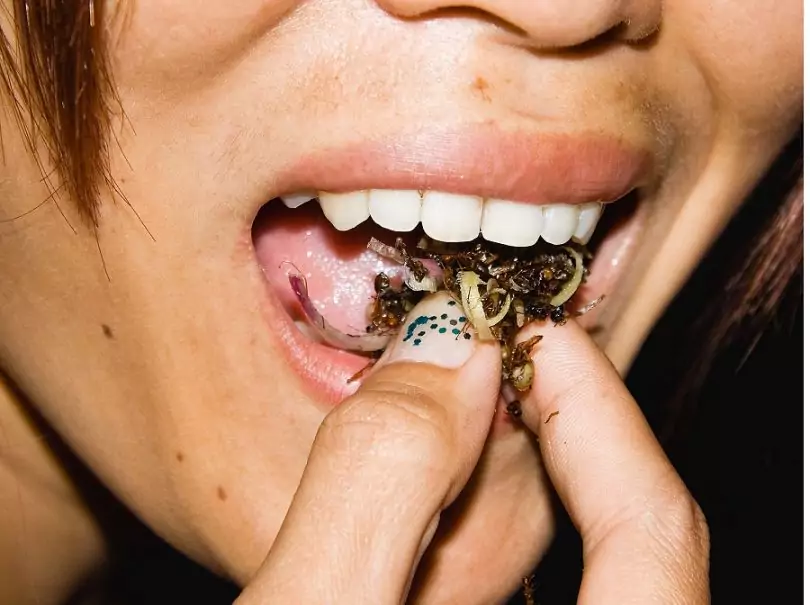
Image Credit: choosedirections.com
Figuring out where to start when it comes to edible insects can be a little nerve wracking. You are not going to want to eat something that is not good for you. Many insects are poisonous and randomly choosing something will not be safe.
You will also not want to eat just any insect that is crawling around. When not raised in a clean environment, they will not be safe to eat. If you are in a survival situation, it is still good to know which bugs will be okay for you to survive on, regardless of where you may be.
Taboo
In the United States and Europe, eating insects is still largely viewed as taboo. Since livestock became a significant investment, bugs have become obsolete. They are seen as destroyers of crops and not as a source of food.
Culture has a great influence on what people choose to eat. In some cultures, foods such as pork, shellfish, and oysters are seen as dirty. This conditioning has everything to do with said culture and how it shapes our opinions and thoughts. Trying new food is always a subject that can be quite touchy.
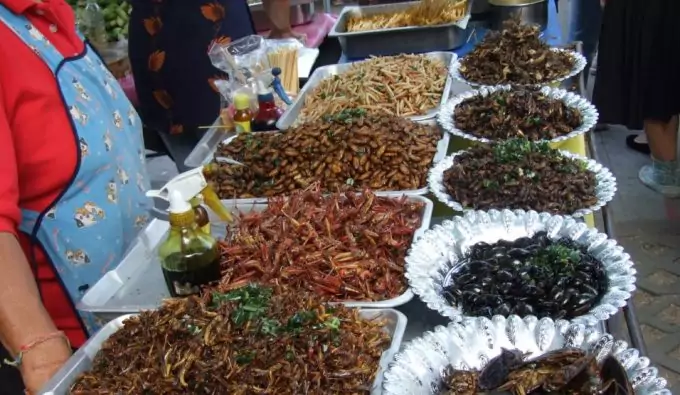
Agrarian society helped to wipe out the use of insects in diets. In the process, it became costlier and more demanding to raise livestock. Since the livestock requires medical care and man power to maintain them, it is much more efficient to use insects as a primary source of protein.
By using pesticides on crops, people are destroying the planet. Instead, they can use an environmentally friendly method and harvest them for food. One hundred pounds of feed produces 10 pounds of beef and 45 pounds of cricket. What else is there to argue for them not only being good for us but good for the environment in their efficiency?
Nutrition
The protein contained in hamburger is approximately 18 percent protein and 18 percent fat. In contrast, cooked grasshoppers contain 60 percent protein with 6 percent fat. Not only are they higher in protein and low in fat, but they also tend to contain healthier unsaturated fatty acids.

Insects can also be high in other nutrients like vitamin B and others. They are not only good for you but good for the planet. Breaking the cycle of pesticides and other methods to get rid of bugs will be beneficial for sure.
Things to Avoid
- Do not just pick up any insect laying around and eat it. It could have bacteria or other harmful environmental properties that are not good for you. Namely, you do not want to be ingesting pesticides from urban areas and even countryside areas.
- Brightly colored bugs and those with spines and other defensive properties are a no no when it comes to survival situations. Alternatively, any situation, really. If you are unsure, you can always cook up a little bit of it and try a piece. Wait for an hour, and if nothing happens, you are probably good to go. This is especially for those in survival situations when all you have to rely on is instinct.
Edible Insects
So, now that you know a little bit about the practice itself let us look at common insects that are consumed in some regions of the world. Before this, however, keep in mind that any kind of new addition to your diet can cause a reaction. Try only one at a time to ease yourself into it.

If you are resorting to eating bugs in a survival situation, you are going to want to cook them if you can. If not, you are probably okay, but it will be a little harder on your stomach. Just make sure to stay away from anything that does not look like it should be eaten. See our article on why you should eat edible insects for more information.
That will be covered later.
- Grasshoppers and Crickets: these insects are incredibly protein-rich, and you can find them just about anywhere. The best times to catch them are in the early morning when they’ve just woken up and move the slowest. You can find grasshoppers and in tall grasses, and crickets in dark and damp places, such as underneath logs. They’re easy to catch by hand, but if you don’t have the time or the energy, you can devise an easier way to catch them that you can leave behind. Simply cut off the top of a plastic bottle, bury it in the ground so that the top is level with the ground, and add a piece of fruit. The next day, you should have plenty of grasshoppers and crickets hopping around. Add some dirt and a few leaves, and they’ll choose to burrow under them instead of trying to get out.
To prepare them, grab their heads and pull; the entrails should come right out with them. These are edible, but removing them eliminates the risk of parasite transmission. - Ants: ants are just about everywhere, so they’re not that hard to find. The problem is telling the difference between one that will serve as a good meal and one that will taste terrible. Once you find one ant, it’s pretty easy to find a large number of them, as they tend to travel in straight lines. If you find an ant hill, that’s an added bonus. Simply agitate the entrance of the ant hill with a stick and insert it in the opening. As the ants try to attack it, dunk the stick into a source of water and they should float. Do this a few times until you have several hundred ants to make a good meal.
To prepare them, boil them for about 6 minutes; this should neutralize the acid that is in their bodies and make them more delectable. If you can’t boil them, at least make sure that they are dead; you don’t want your meal to start biting back.
As a word of warning, avoid trying to eat any ants that are red; they’ll be extremely bitter. - Termites: considered to be a hazard to homeowners, these little bugs are rich in protein, and they’re easy to find in you’re camping in a wooded area. Simply look for downed trees or rotting logs; you’re bound to find some termites inside, munching away. Because they spend most of their lives living in wood, there is less likelihood that they’ve contracted parasites from other insects. To find them, break open a log and shake it hard and fast into a container. They’re light sensitive, so they’ll try to bury deeper into the wood once exposed.
To prepare termites, roast them in a dry pan for a few minutes. They’ll have a bit of a woody taste to them, but the overall taste is not unpleasant. - Grubs: you may have seen survival experts on television chowing down on these fat insects, and you may have to do just the same in order to survive. The great thing about them is that they’re easy to find and collect, since they don’t move very fast. The downside is the sheer size and creepiness factor of a grub bursting in your mouth. The best place to find them is in rotting logs, and under rocks.
To prepare, you can eat them raw, but if you prefer, you can cook them. Simply skewer them on a long stick and roast them over an open flame until the skin is crispy. - Wood lice: also called potato or pill bugs, wood lice actually aren’t bugs at all. Instead, they are a form of land crustacean, which makes them related to crab and shrimp. Many outdoorsmen even say that it has a shrimpy taste to it. The best way to collect them is to overturn rocks and leaves, as well as rotting tree logs. You can easily get a few handfuls.
To prepare, drop them into a pot of boiling water and cook them for a while. It’s not recommended that you eat them raw, as they can carry nematodes. When they’re done, strain out the water and eat. - Earthworms: even little kids know how to find earthworms, so this is another insect that’s easy to catch. Dig around in some damp soil, turn over some rocks, or look under some rotting leaves for these wriggling creatures. You don’t have to worry about them trying to get away from you too quickly.
To prepare, they can be eaten raw or cooked; the latter is recommended to eliminate the chances of parasite transmission. - Stinkbugs: from a name like stinkbug, you wouldn’t think that it would be on a list of insects to eat. However, they’re quite common, so you won’t have to worry about searching for them for a long time. They traverse the ground very openly during the warm summer months, and can be found under rocks and logs when it gets a bit colder.
Some people have been known to eat them raw, but there are better ways to get over the initial stink. Soak them in water for 5 to 10 minutes, then roast them in a dry pan. Be wary that some of them may still be alive after cooking, but you can still eat them anyway. They’re said to have a hint of iodine flavour. - Scorpions: they’re mostly found in hot and dry locations, so you may not find any at all, depending on where you’re camping. Finding them will take a bit of skill, so they could be a last resort if you can’t find anything else. You’ll first have to find their dens, which will be low to the ground and underneath hanging rocks or logs. Dig a hole at the entrance large enough to bury a jar or a cup; when the scorpion comes out at night, it will fall right in. Simply kill it and cut off the stinger.
To prepare, skewer it with a stick and roast over an open flame until it’s brown. It is said to taste somewhat like crab. - Snails and slugs: you can easily find these feasting on rotting vegetation, and even though they’re quite slow, caution should be exercised. They can east poisonous vegetation and mushrooms that make their flesh toxic. To avoid this, you can keep them in a container for a few days in order for the toxins to dissipate, as well as feed them plants that you know aren’t toxic. Then, prepare them throughly in any way you like.
While this is not a comprehensive list, it is still a great start on knowing what kind of insects that you can eat. Once you get over the overall squeamishness about eating insects in general, it is not hard to begin your adventure. It will certainly be an exciting experience to have.
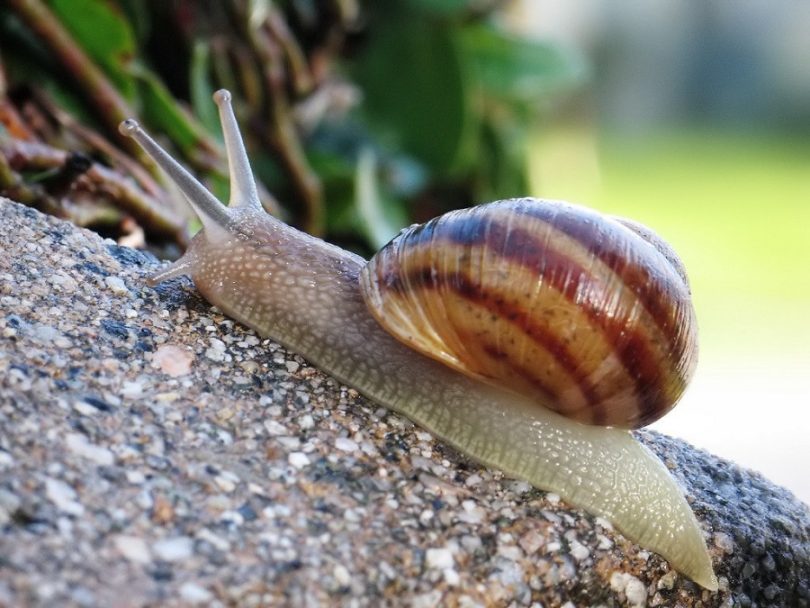
When it comes to edible insects, you are going to want to take it slow. As with any new addition to your diet, ease into it and eat only what is known to be easy on the stomach, at least at first. Once your body is used to it, feel free to dig in and experience whatever you can. It can be an exciting thing, so do make the best of it. You can also take a look on our previous article on how to survive being lost in the woods – it’s a very useful piece.
If you have to eat insects in a survival situation, it may be much easier to handle since you have no choice. However, knowing which kinds of bugs that you can eat just might save your life. Regardless of your reasoning behind your interest in edible insects, you will be able to take advantage of the nutritional value and find something new to bring into your diet.
To learn how to get food in the wild, see our article on the topic – it’s an important piece to read before you head to your next adventure.
Let me know what you think in the comments and share if you enjoyed this guide! Good luck in your edible insect endeavors and most of all, be safe!

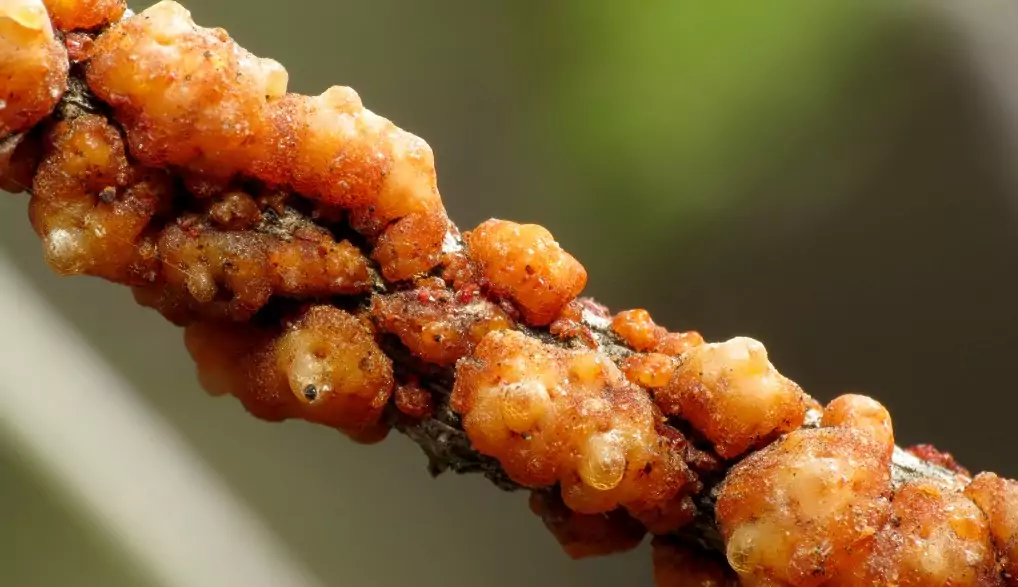
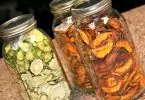





Henry, have you tried any of these delicacies? The only bug I can think of that I’ve tasted was a ladybug that I accidentally swallowed while biking a few years ago. It left a very bad taste.
That said, I think anyone who spends a lot of time in the wilderness should get comfortable with the prospect of survival and along with native plant species. A look at this list you’ve provided helps understand the options. The human body needs those nutrients to survive. The land crustacean (pill bugs) is helpful because I do like crab and shrimp. These just live in the forests instead of the ocean.
Hey Dawson I love how you put that “these live in the forests instead of the ocean.” I know that some people will find the prospect of eating bugs a bit “wild”, but when you’re trying to survive, knowing how to get food is crucial.
And yes, I’ve eaten my fill of these nutritious bugs and like Pumba in the Lion King, they are “slimy yet satisfying!”
Bon Appetit!
My tip on eating grasshoppers is to make sure to cook them. Boil them for a few minutes to make the legs easier to remove. You can also just pull the head off to remove the guts which may have parasites, then insert a stick thru it and cook it over a fire.
Thanks for this handy “recipe” tip Brian. I’m sure a lot of outdoor lovers will love this! 🙂
Those parasitic hairworm can wreak havoc on the insect’s body and might make us sick – so yes, cook those grasshoppers!